Geo-Sensor Framework and Composition Toolbox for Efficient Deployment of Multiple Spatial Context Service Platforms in Sensor Networks
Abstract
1. Introduction
- Ease of deployment for geo-sensor networks based on DIY,
- Multi-platform geo-sensing services generation,
- Independent geo-sensor composite toolbox for ease of management,
- Visualization tool for users,
- Removing redundancy.
2. Literature Review
3. Geo-Sensor Framework
3.1. Geo-Sensor Framework and Geo-Sensor Platform Generation
3.2. Geo-Sensor Composite Toolbox
4. Implementation
4.1. Implementation Environment
4.2. Implemented System Output
5. Analysis Results
5.1. Geo-Sensor Framework Performance
5.2. Performance Comparisons for RESTful and SOAP Based Web Services Implementation
6. Discussion and Conclusions
Author Contributions
Funding
Conflicts of Interest
References
- Ayday, C.; Safak, S. Application of wireless sensor networks with GIS on the soil moisture distribution mapping. In Proceedings of the Symposium GIS Ostrava, Ostrava, Czech Republic, 25–28 January 2009. [Google Scholar]
- Aldasouqi, I.; Atoum, J. Stream Processing Environmental Applications in Jordan Valley. Int. J. Comput. Sci. Secur. (IJCSS) 2011, 5, 1. [Google Scholar]
- Eddy, N. Gartner: 21 Billion IoT Devices to Invade by 2020—InformationWeek. Available online: http://www.informationweek.com/mobile/mobile-devices/gartner-21-billion-iot-devices-toinvade-by-2020/d/d-id/1323081 (accessed on 1 October 2019).
- De Roeck, D.; Slegers, K.; Criel, J.; Godon, M.; Claeys, L.; Kilpi, K.; Jacobs, A. I would DiYSE for it!: A manifesto for do-it-yourself internet-of-things creation. In Proceedings of the 7th Nordic Conference on Human-Computer Interaction: Making Sense through Design, Copenhagen, Denmark, 4–17 October 2012; pp. 170–179. [Google Scholar]
- Heath, N. How IBM’s Node-RED Is Hacking Together the Internet of Things. Available online: http://www.techrepublic.com/article/node-red/ (accessed on 1 October 2019).
- Quoc, H.N.M.; Serrano, M.; Le-Phuoc, D.; Hauswirth, M. Super stream collider–linked stream mashups for everyone. In Proceedings of the SemanticWeb Challenge Co-Located with ISWC2012, Boston, MA, USA, 11–15 November 2012. [Google Scholar]
- Mazzei, D.; Montelisciani, G.; Fantoni, G.; Baldi, G. Internet of Things for designing smart objects. In Proceedings of the 2014 IEEE World Forum on Internet of Things (WF-IoT), Seoul, Korea, 6–8 March 2014; pp. 293–297. [Google Scholar]
- Pachube—The Internet of Things Real-TimeWeb Service and Applications. Available online: http://www.appropedia.org/Pachube (accessed on 1 October 2019).
- Kefalakis, N.; Soldatos, J.; Anagnostopoulos, A.; Dimitropoulos, P. A Visual Paradigm for IoT Solutions Development. In Model and Data Engineering; Springer Science and Business Media LLC: Berlin, Germany, 2015; Volume 9001, pp. 26–45. [Google Scholar]
- Lee, H.; Sin, D.; Park, E.; Hwang, I.; Hong, G.; Shin, D. Open software platform for companion IoT devices. In Proceedings of the 2017 IEEE International Conference on Consumer Electronics (ICCE), Las Vegas, NV, USA, 8–10 January 2017; pp. 394–395. [Google Scholar]
- Zhang, Z.; Mondschein, A.; El Khafif, M. Human-Tool Assemblage: Designers in the Big Data World. J. Digit. Landsc. Archit. 2018, 3, 397–405. [Google Scholar] [CrossRef]
- Dey, A.K. Understanding and using context. Pers. Ubiquitous Comput. 2001, 5, 4–7. [Google Scholar] [CrossRef]
- Hong, J.; Suh, E.H.; Kim, J.; Kim, S. Context-aware system for proactive personalized service based on context history. Expert Syst. Appl. 2009, 36, 7448–7457. [Google Scholar] [CrossRef]
- Lukowicz, P.; Choudhury, T.; Gellersen, H. Beyond context awareness. IEEE Pervasive Comput. 2011, 10, 15–17. [Google Scholar] [CrossRef]
- Schmidt, A.; Beigl, M.; Gellersen, H.W. There is more to context than location. Comput. Graph. 1999, 23, 893–901. [Google Scholar] [CrossRef]
- Sagl, G.; Blaschke, T.; Beinat, E.; Resch, B. Ubiquitous Geo-Sensing for Context-Aware Analysis: Exploring Relationships between Environmental and Human Dynamics. Sensors 2012, 12, 9800–9822. [Google Scholar] [CrossRef]
- Cools, M.; Moons, E.; Creemers, L.; Wets, G. Changes in Travel Behavior in Response to Weather Conditions. Transp. Res. Rec. J. Transp. Res. Board 2010, 2157, 22–28. [Google Scholar] [CrossRef]
- Merbitz, H.; Buttstädt, M.; Michael, S.; Dott, W.; Schneider, C. GIS-based identification of spatial variables enhancing heat and poor air quality in urban areas. Appl. Geogr. 2012, 33, 94–106. [Google Scholar] [CrossRef]
- Sagl, G.; Resch, B.; Blaschke, T. Contextual Sensing: Integrating Contextual Information with Human and Technical Geo-Sensor Information for Smart Cities. Sensors 2015, 15, 17013–17035. [Google Scholar] [CrossRef]
- Chang, N.B.; Guo, D.H. Urban flash flood monitoring, mapping and forecasting via a tailored sensor network system. In Proceedings of the IEEE Interantional Conference on Networking, Sensing and Control 2006 (ICNSC’06), Ft. Lauderdale, FL, USA, 23–25 April 2006; pp. 757–761. [Google Scholar]
- Horita, F.E.; De Albuquerque, J.P.; Degrossi, L.C.; Mendiondo, E.M.; Ueyama, J. Development of a spatial decision support system for flood risk management in Brazil that combines volunteered geographic information with wireless sensor networks. Comput. Geosci. 2015, 80, 84–94. [Google Scholar] [CrossRef]
- Mead, M.; Popoola, O.; Stewart, G.; Landshoff, P.; Calleja, M.; Hayes, M.; Baldovi, J.; McLeod, M.; Hodgson, T.; Dicks, J.; et al. The use of electrochemical sensors for monitoring urban air quality in low-cost, high-density networks. Atmos. Environ. 2013, 70, 186–203. [Google Scholar] [CrossRef]
- Resch, B.; Blaschke, T.; Mittlboeck, M. Live geography: Interoperable geo-sensor webs facilitating the vision of digital earth. Int. J. Adv. Netw. Serv. 2010, 3, 323–332. [Google Scholar]
- Resch, B.; Mittlboeck, M.; Girardin, F.; Britter, R.; Ratti, C. Live geography—Embedded sensing for standardised urban environmental monitoring. Int. J. Adv. Syst. Meas. 2009, 2, 15–167. [Google Scholar]
- De Nazelle, A.; Seto, E.; Donaire-González, D.; Mendez, M.; Matamala, J.; Nieuwenhuijsen, M.J.; Jerrett, M. Improving estimates of air pollution exposure through ubiquitous sensing technologies. Environ. Pollut. 2013, 176, 92–99. [Google Scholar] [CrossRef]
- Brienza, S.; Galli, A.; Anastasi, G.; Bruschi, P. A Low-Cost Sensing System for Cooperative Air Quality Monitoring in Urban Areas. Sensors 2015, 15, 12242–12259. [Google Scholar] [CrossRef]
- Devaraju, A.; Kauppinen, T. Sensors Tell More than They Sense: Modeling and Reasoning about Sensor Observations for Understanding Weather Events. Int. J. Sens. Wirel. Commun. Control 2012, 2, 14–26. [Google Scholar] [CrossRef]
- Muller, C.L.; Chapman, L.; Grimmond, C.S.B.; Young, D.T.; Cai, X. Sensors and the city: A review of urban meteorological networks. Int. J. Clim. 2013, 33, 1585–1600. [Google Scholar] [CrossRef]
- Elen, B.; Peters, J.; Poppel, M.; Bleux, N.; Theunis, J.; Reggente, M.; Standaert, A.; Van Poppel, M. The Aeroflex: A Bicycle for Mobile Air Quality Measurements. Sensors 2012, 13, 221–240. [Google Scholar] [CrossRef]
- Nakamura, T.; Kikuya, Y.; Arakawa, Y.; Nakamura, M.; Higashijima, Y.; Maruo, Y.Y.; Nakamura, M. Proposal of web framework for ubiquitous sensor network and its trial application using NO2 sensor mounted on bicycle. In Proceedings of the 2012 IEEE/IPSJ 12th International Symposium, Izmir, Turkey, 16–20 July 2012; pp. 83–90. [Google Scholar]
- Bossche, J.V.D.; Peters, J.; Verwaeren, J.; Botteldooren, D.; Theunis, J.; De Baets, B. Mobile monitoring for mapping spatial variation in urban air quality: Development and validation of a methodology based on an extensive dataset. Atmos. Environ. 2015, 105, 148–161. [Google Scholar] [CrossRef]
- Peters, J.; Bossche, J.V.D.; Reggente, M.; Van Poppel, M.; De Baets, B.; Theunis, J. Cyclist exposure to UFP and BC on urban routes in Antwerp, Belgium. Atmos. Environ. 2014, 92, 31–43. [Google Scholar] [CrossRef]
- Thuro, K.; Singer, J.; Festl, J. A Geosensor Network Based Monitoring and Early Warning System for Landslides; Springer Science and Business Media LLC: Berlin, Germany, 2013; pp. 79–86. [Google Scholar]
- Chuli, H.; Nengcheng, C. Geospatial sensor web for smart disaster emergency processing. In Proceedings of the 19th International Conference on Geoinformatics 2011, Shanghai, China, 24–26 June 2011; pp. 1–5. [Google Scholar]
- Essa, I. Ubiquitous sensing for smart and aware environments. IEEE Wirel. Commun. 2000, 7, 47–49. [Google Scholar] [CrossRef]
- Mann, W.; El-Zabadani, H.; Kaddoura, Y.; Helal, S.; King, J.; Jansen, E. The Gator Tech Smart House: A programmable pervasive space. Computer 2005, 38, 50–60. [Google Scholar]
- Munoz, A.; Serrano, E.; Villa, A.; Valdés, M.; Botia, J.A. An Approach for Representing Sensor Data to Validate Alerts in Ambient Assisted Living. Sensors 2012, 12, 6282–6306. [Google Scholar] [CrossRef]
- Kim, S.C.; Jeong, Y.S.; Park, S.O. Rfid-based indoor location tracking to ensure the safety of the elderly in smart home environments. Pers. Ubiquitous Comput. 2013, 17, 1699–1707. [Google Scholar] [CrossRef]
- Palumbo, F.; Ullberg, J.; Štimec, A.; Furfari, F.; Karlsson, L.; Coradeschi, S. Sensor Network Infrastructure for a Home Care Monitoring System. Sensors 2014, 14, 3833–3860. [Google Scholar] [CrossRef]
- Forkan, A.; Khalil, I.; Tari, Z. Cocamaal: A cloud-oriented context-aware middleware in ambient assisted living. Future Gener. Comput. Syst. 2014, 35, 114–127. [Google Scholar] [CrossRef]
- Garcia, N.M.; Rodrigues, J.J.P. Ambient Assisted Living; CRC Press: Boca Raton, FL, USA, 2015. [Google Scholar]
- Bisio, I.; Lavagetto, F.; Marchese, M.; Sciarrone, A. Smartphone-centric ambient assisted living platform for patients suffering from co-morbidities monitoring. IEEE Commun. Mag. 2015, 53, 34–41. [Google Scholar] [CrossRef]
- Arnrich, B.; Mayora, O.; Bardram, J.; Tröster, G. Pervasive healthcare. Methods Inf. Med. 2010, 49, 67–73. [Google Scholar] [CrossRef]
- Keh, H.C.; Shih, C.C.; Chou, K.Y.; Cheng, Y.C.; Ho, H.K.; Yu, P.Y.; Huang, N.C. Integrating unified communications and internet of m-health things with micro wireless physiological sensors. J. Appl. Sci. Eng. 2014, 17, 319–328. [Google Scholar]
- Mukhopadhyay, S.; Postolache, O.A. Pervasive and Mobile Sensing and Computing for Healthcare; Springer: Berlin/Heidelberg, Germany, 2014. [Google Scholar]
- Schade, S.; Díaz, L.; Ostermann, F.; Spinsanti, L.; Luraschi, G.; Cox, S.; Nuñez, M.; de Longueville, B. Citizen-based sensing of crisis events: Sensor web enablement for volunteered geographic information. Appl. Geomat. 2013, 5, 3–18. [Google Scholar] [CrossRef]
- Poser, K.; Dransch, D. Volunteered geographic information for disaster management with application to rapid flood damage estimation. Geomatica 2010, 64, 89–98. [Google Scholar]
- Hayes, J.; Stephenson, M. Bridging the social and physical sensing worlds: Detecting coverage gaps and improving sensor networks. In Proceedings of the First Workshop on Pervasive Urban Applications (PURBA) in Conjunction with the Ninth International Conference on Pervasive Computing, San Francisco, CA, USA, 12–15 June 2011. [Google Scholar]
- Tamilin, A.; Carreras, I.; Ssebaggala, E.; Opira, A.; Conci, N. Context-aware mobile crowdsourcing. In Proceedings of the 2012 ACM Conference on Ubiquitous Computing, Pittsburgh, PA, USA, 5–8 September 2012; pp. 717–720. [Google Scholar]
- Roitman, H.; Mamou, J.; Mehta, S.; Satt, A.; Subramaniam, L.V. Harnessing the crowds for smart city sensing. In Proceedings of the 1st International Workshop on Multimodal Crowd Sensing, Maui, HI, USA, 29 October–2 November 2012; pp. 17–18. [Google Scholar]
- Koch, F.; Cardonha, C.; Gentil, J.M.; Borger, S. A Platform for Citizen Sensing in Sentient Cities. In Computer Vision—ECCV 2012; Springer Science and Business Media LLC: Berlin, Germany, 2013; Volume 7685, pp. 57–66. [Google Scholar]
- Doran, D.; Gokhale, S.; Dagnino, A. Human sensing for smart cities. In Proceedings of the 2013 IEEE/Acm International Conference on Advances in Social Networks Analysis and Mining, Niagara, ON, Canada, 25–28 August 2013; pp. 1323–1330. [Google Scholar]
- Liao, C.C.; Hou, T.F.; Lin, T.Y.; Cheng, Y.J.; Erbad, A.; Hsu, C.H.; Venkatasubramania, N. Sais: Smartphone augmented infrastructure sensing for public safety and sustainability in smart cities. In Proceedings of the 1st International Workshop on Emerging Multimedia Applications and Services for Smart Cities, Orlando, FL, USA, 3–7 November 2014; pp. 3–8. [Google Scholar]
- Evchina, Y.; Puttonen, J.; Dvoryanchikova, A.; Lastra, J.L.M. Context-aware knowledge-based middleware for selective information delivery in data-intensive monitoring systems. Eng. Appl. Artif. Intell. 2015, 43, 111–126. [Google Scholar] [CrossRef]
- Pantelopoulos, A.; Bourbakis, N.G. A survey on wearable sensor-based systems for health monitoring and prognosis. IEEE Trans. Syst. Man Cybern. Part C Appl. Rev. 2010, 40, 1–12. [Google Scholar] [CrossRef]
- Swan, M. Sensor mania! The internet of things, wearable computing, objective metrics, and the quantified self 2.0. J. Sens. Actuator Netw. 2012, 1, 217–253. [Google Scholar] [CrossRef]
- Resch, B.; Summa, A.; Sagl, G.; Zeile, P.; Exner, J.P. Urban emotions—Geo-semantic emotion extraction from technical sensors, human sensors and crowdsourced data. In Progress in Location-Based Services 2014; Springer: Cham, Germany, 2015; pp. 199–212. [Google Scholar]
- Garbarino, M.; Lai, M.; Bender, D.; Picard, R.W.; Tognetti, S. Empatica e3—A wearable wireless multi-sensor device for real-time computerized biofeedback and data acquisition. In Proceedings of the 4th International Conference on Wireless Mobile Communication and Healthcare (Mobihealth), Athens, Greece, 3–5 November 2014; pp. 39–42. [Google Scholar]
- Resch, B.; Sudmanns, M.; Sagl, G.; Summa, A.; Zeile, P.; Exner, J.P. Crowdsourcing Physiological Conditions and Subjective Emotions by Coupling Technical and Human Mobile Sensors. GI_Forum 2015, 1, 514–524. [Google Scholar] [CrossRef]
- Batelaan, O.; Wang, Z.M.; De Smedt, F. An adaptive GIS toolbox for hydrological modelling. IAHS Publ. Ser. Proc. Rep. Intern. Assoc. Hydrol. Sci. 1996, 235, 3–10. [Google Scholar]
- Vandergast, A.G.; Perry, W.M.; Lugo, R.V.; Hathaway, S.A. Genetic landscapes GIS Toolbox: Tools to map patterns of genetic divergence and diversity. Mol. Ecol. Resour. 2011, 11, 158–161. [Google Scholar] [CrossRef]
- Benz, U.C.; Hofmann, P.; Willhauck, G.; Lingenfelder, I.; Heynen, M. Multi-resolution, object-oriented fuzzy analysis of remote sensing data for GIS-ready information. ISPRS J. Photogramm. Remote Sens. 2004, 58, 239–258. [Google Scholar] [CrossRef]
- Weng, Q. Land use change analysis in the Zhujiang Delta of China using satellite remote sensing, GIS and stochastic modelling. J. Environ. Manag. 2002, 64, 273–284. [Google Scholar] [CrossRef]
- Weng, Q. A remote sensing–GIS evaluation of urban expansion and its impact on surface temperature in the Zhujiang Delta, China. Int. J. Remote Sens. 2001, 22, 1999–2014. [Google Scholar]
- Cuff, D.; Hansen, M.; Kang, J. Urban Sensing: Out of the Woods. Commun. ACM 2008, 51, 24. [Google Scholar] [CrossRef]
- Martino, M.; Britter, R.; Outram, C.; Zacharias, C.; Biderman, A.; Ratti, C. Senseable City. Available online: http://www.mamartino.com/images/senseable_city.pdf (accessed on 19 November 2019).
- Gabrys, J. Programming Environments: Environmentality and Citizen Sensing in the Smart City. Environ. Plan. D Soc. Space 2014, 32, 30–48. [Google Scholar] [CrossRef]

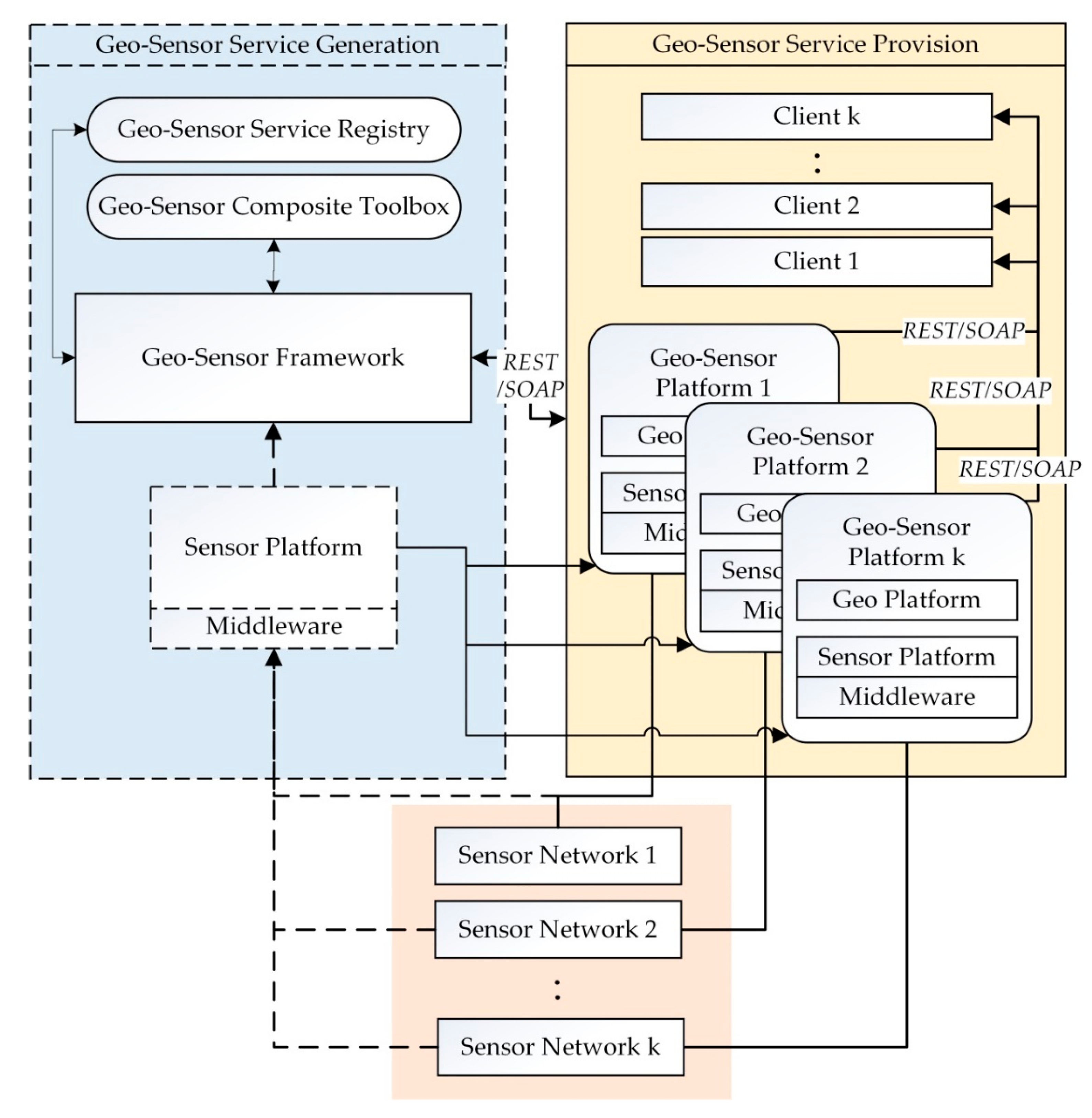
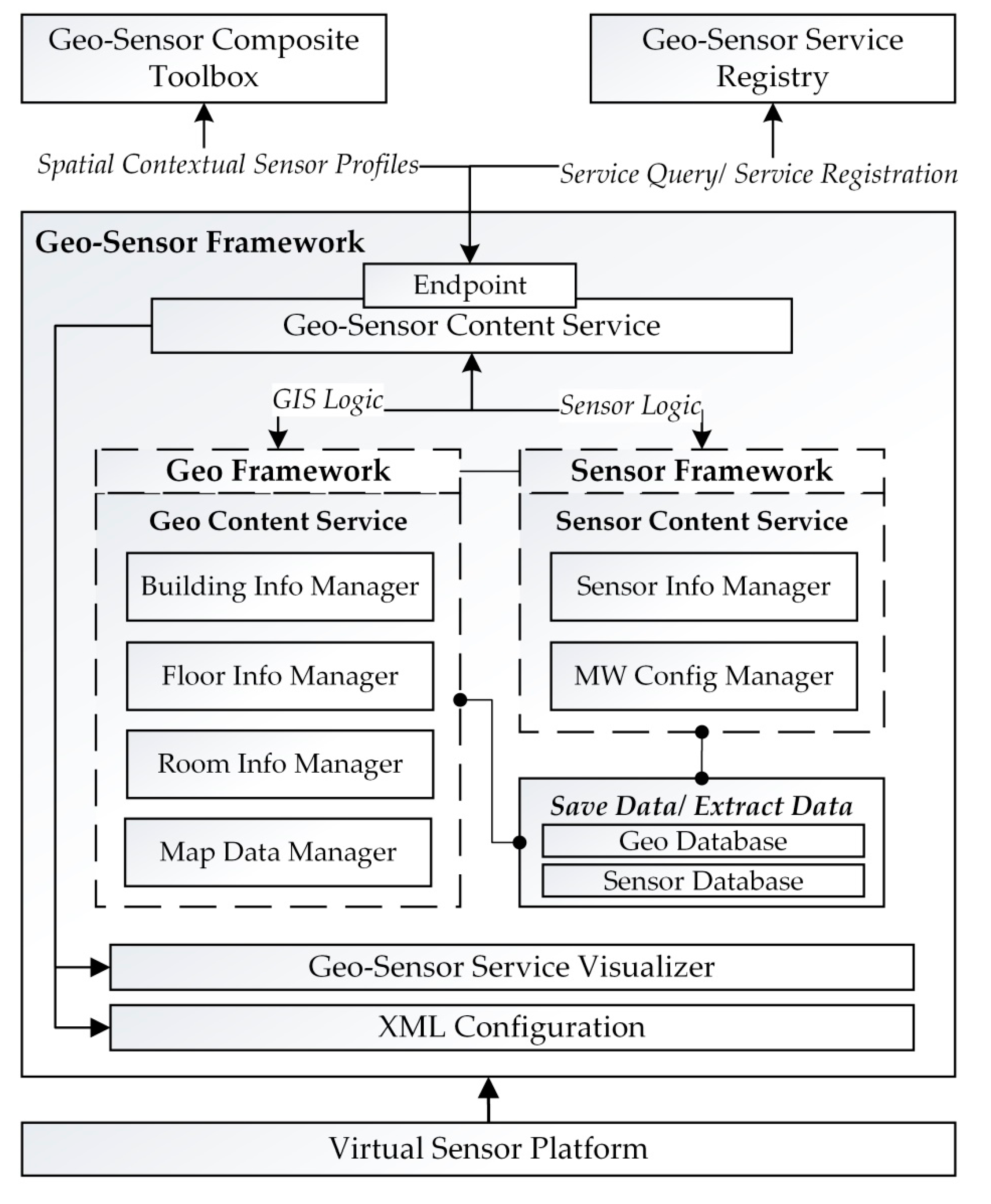
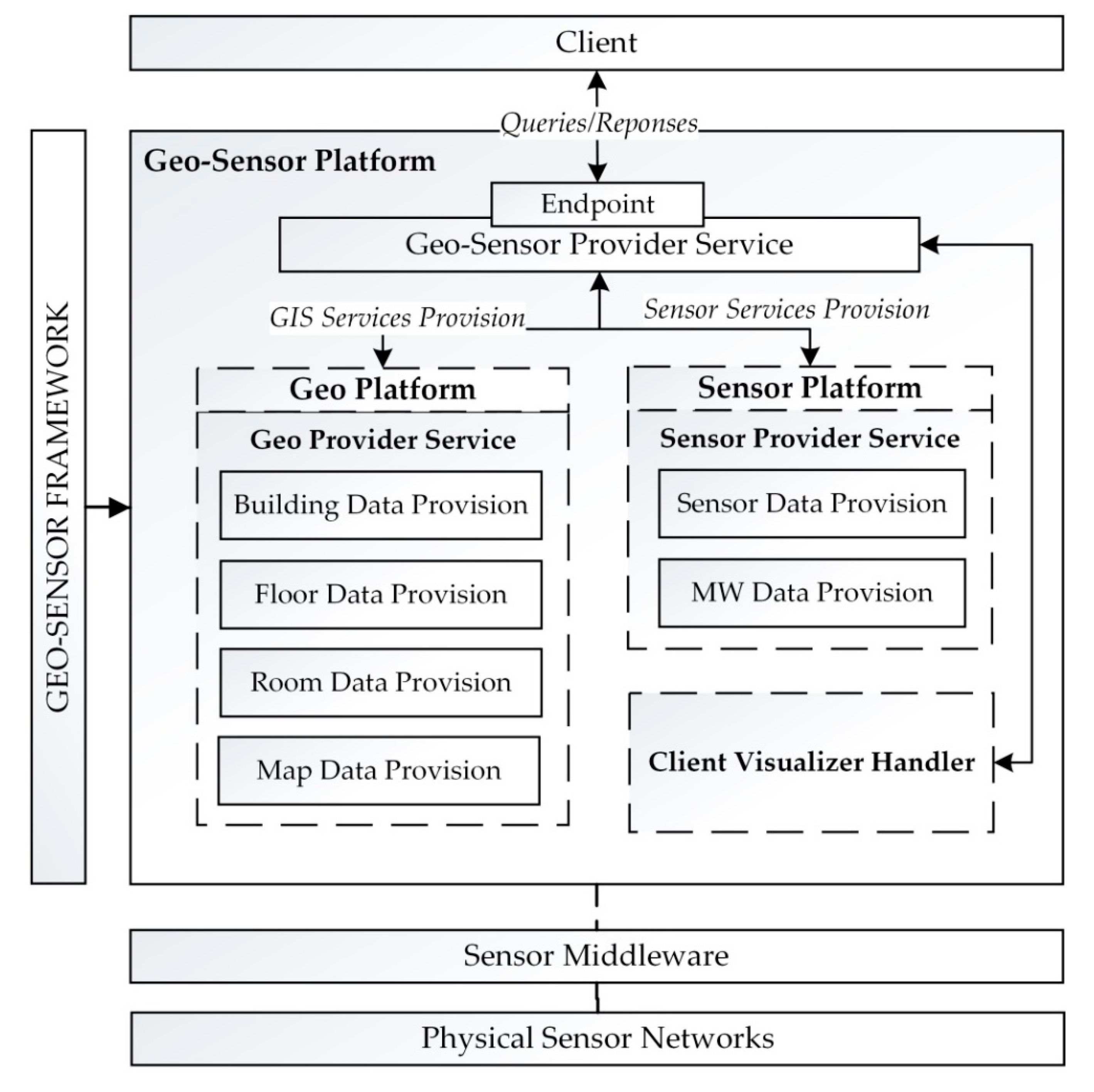
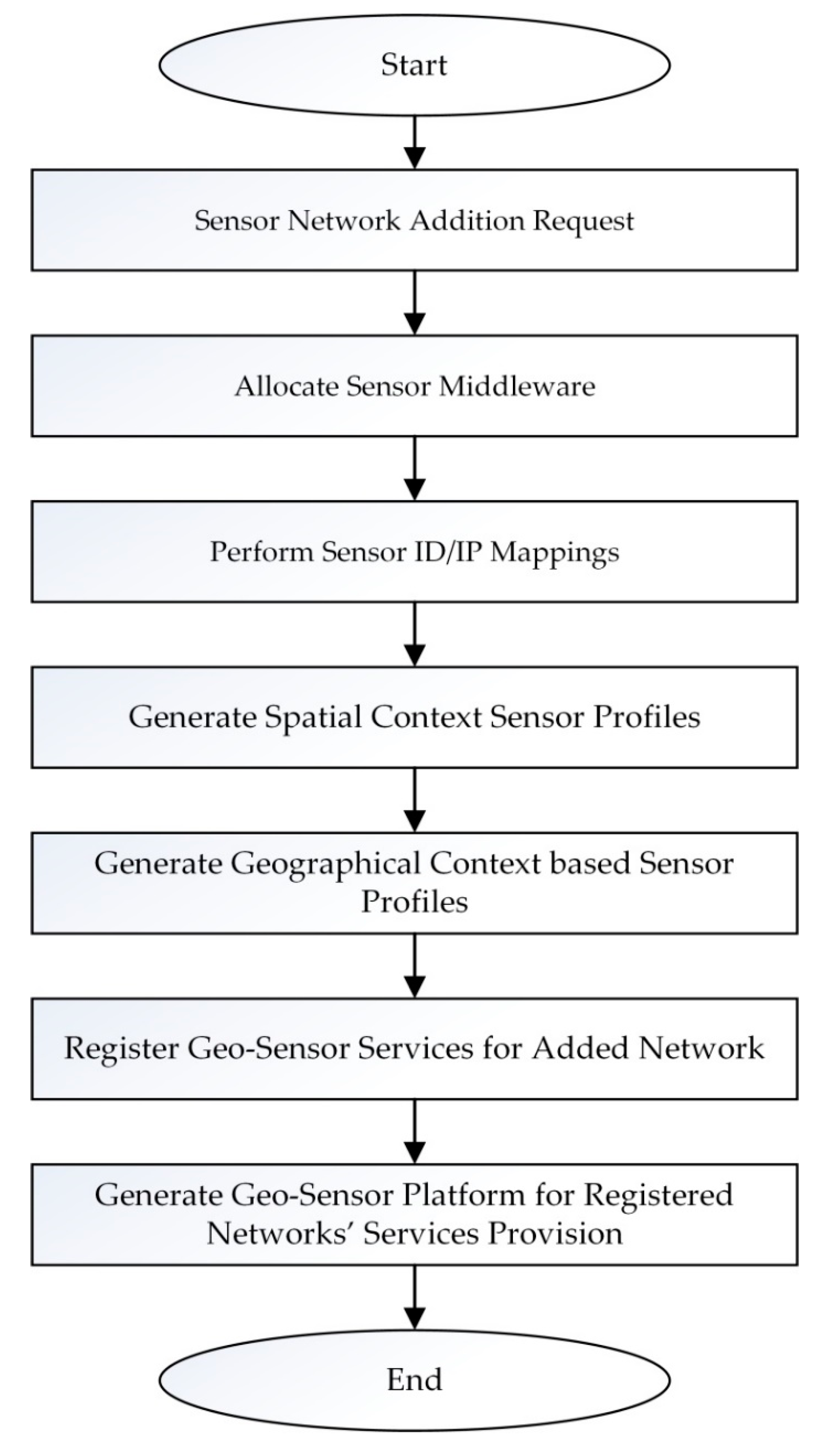
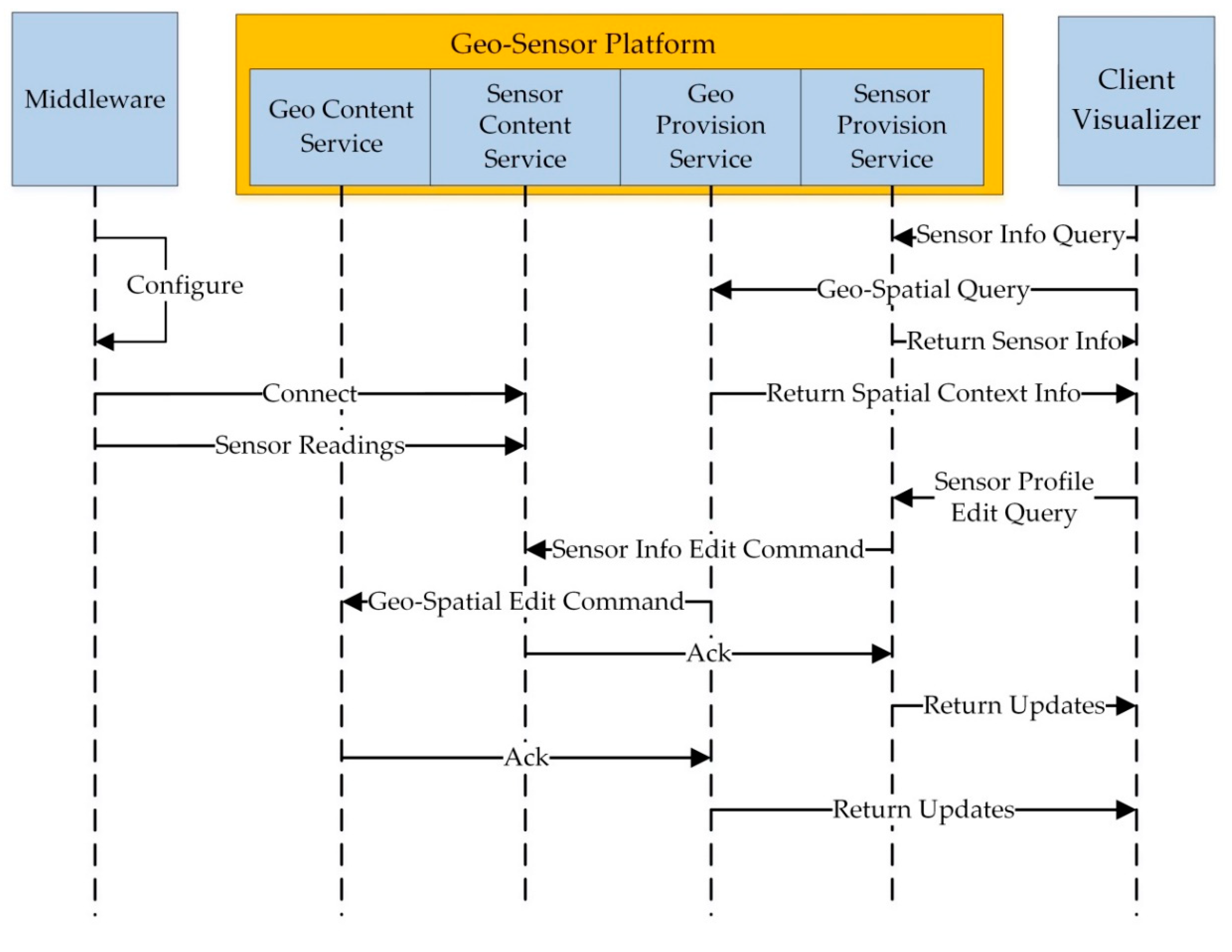
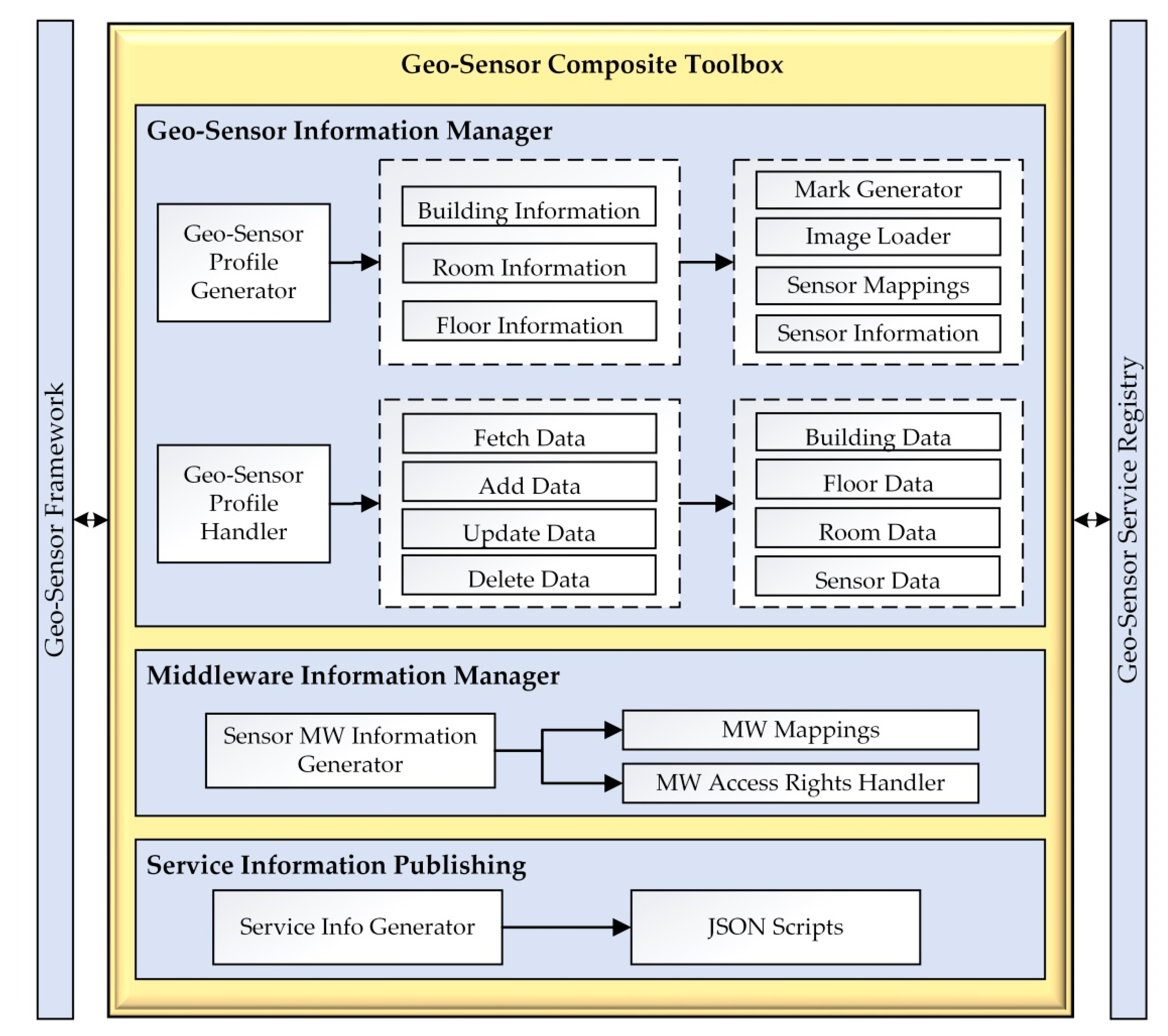
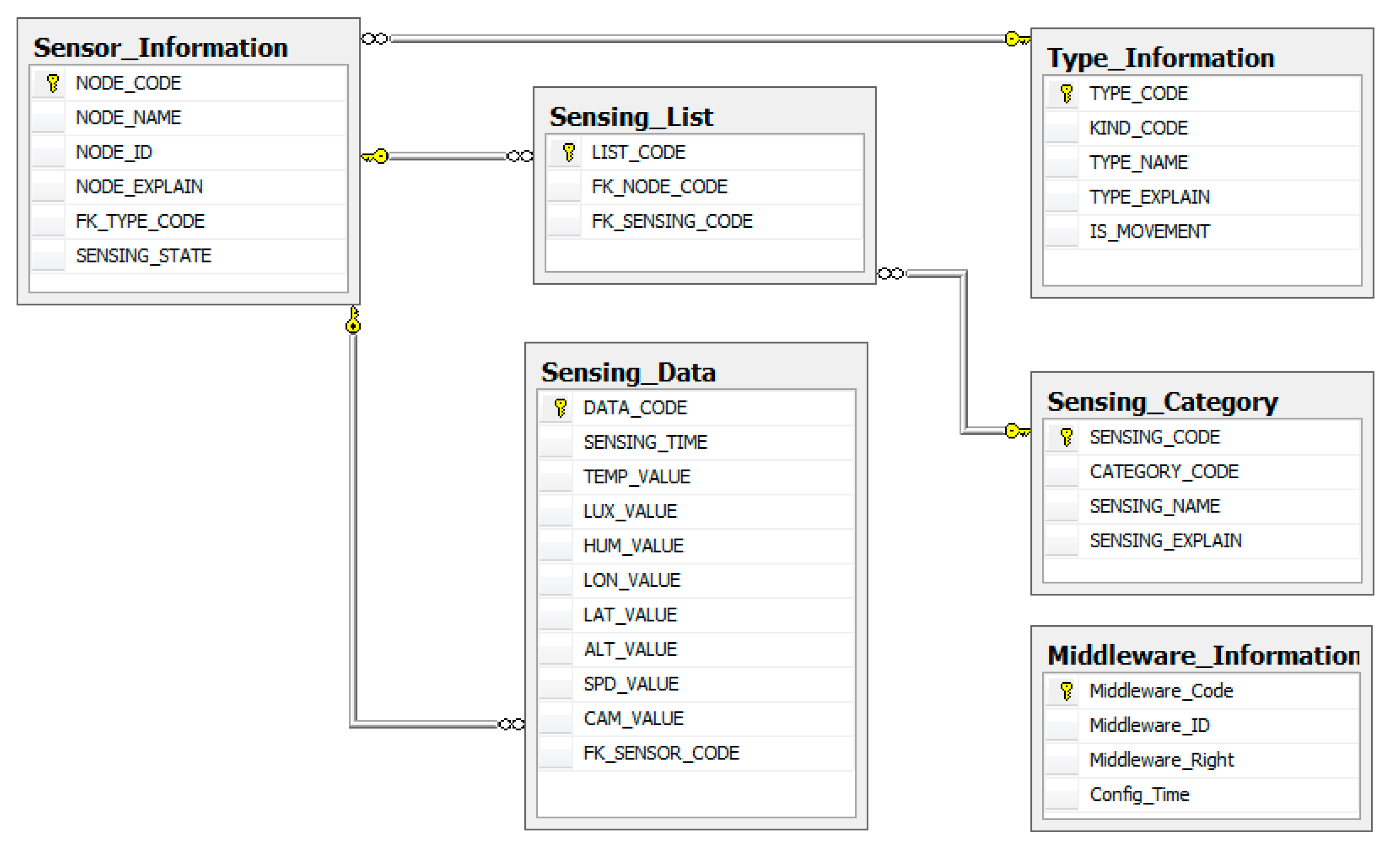
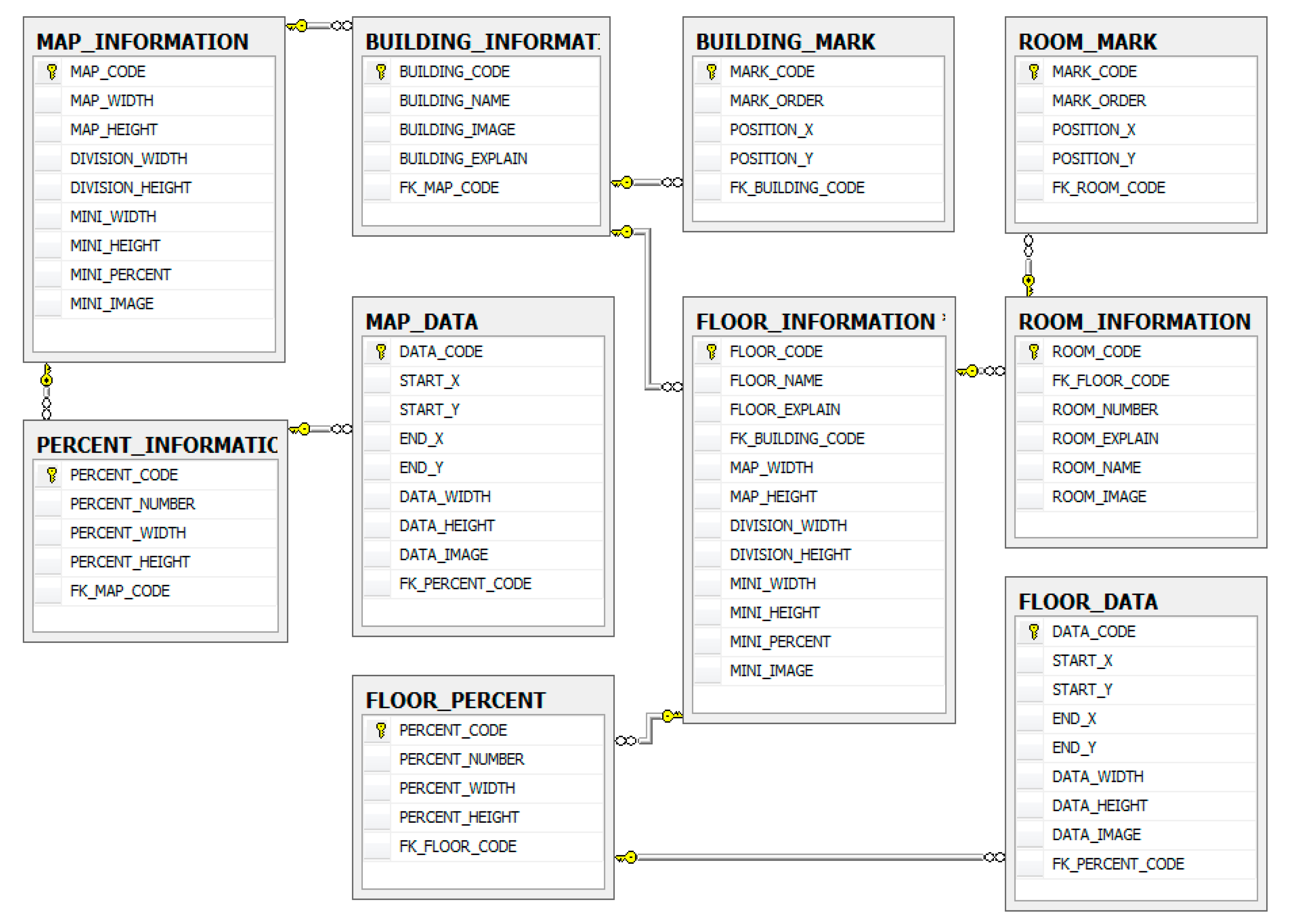
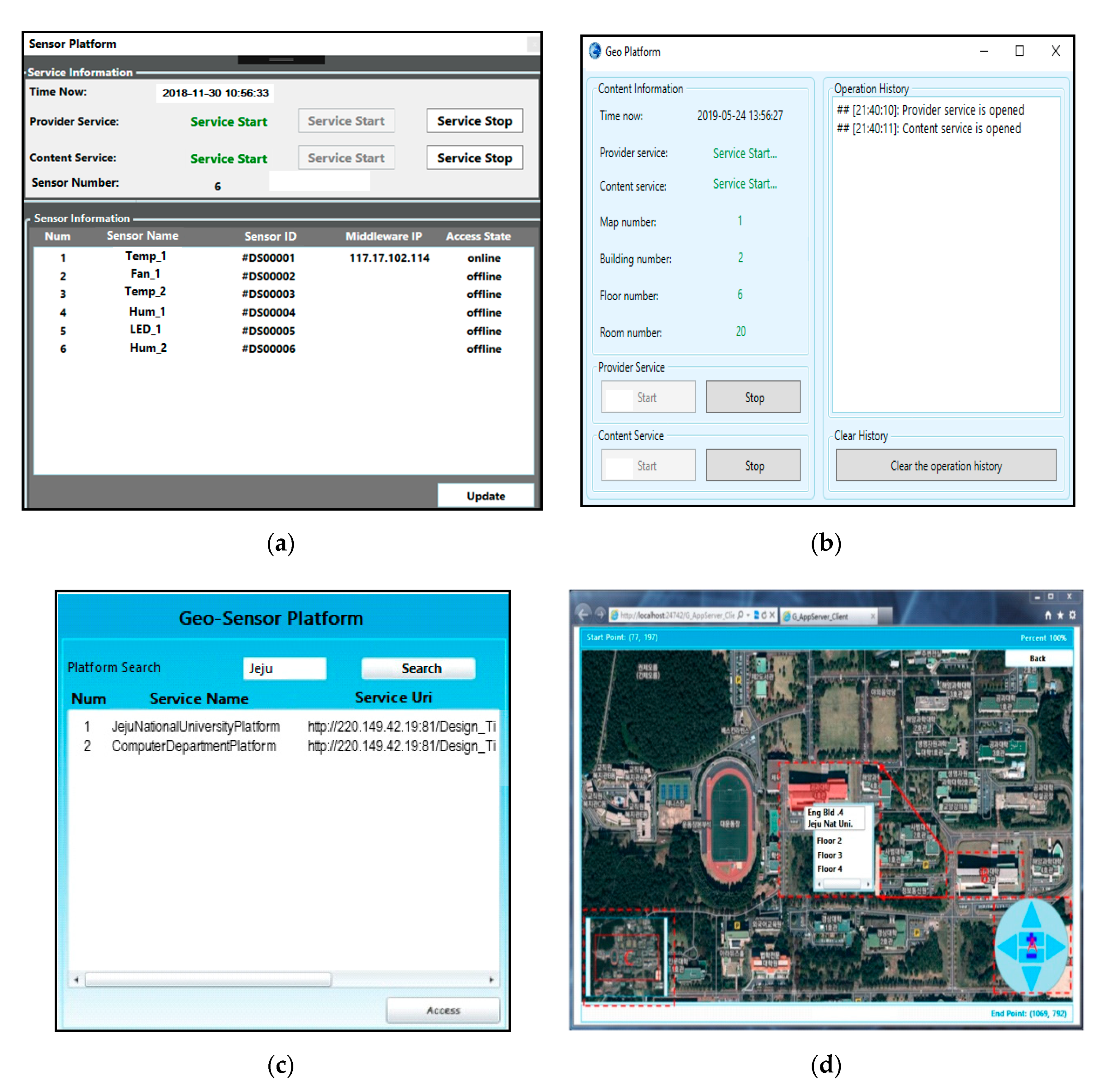
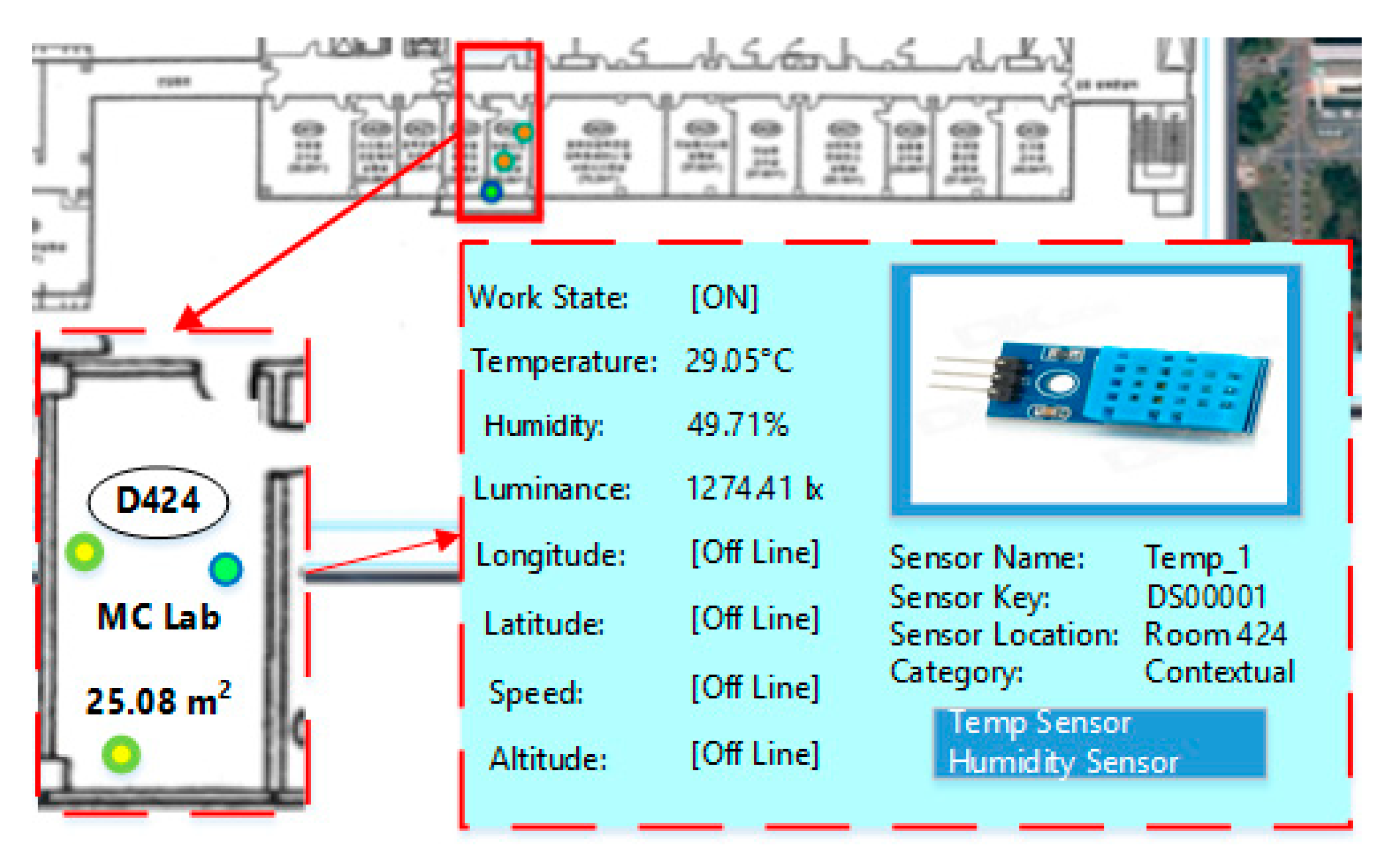
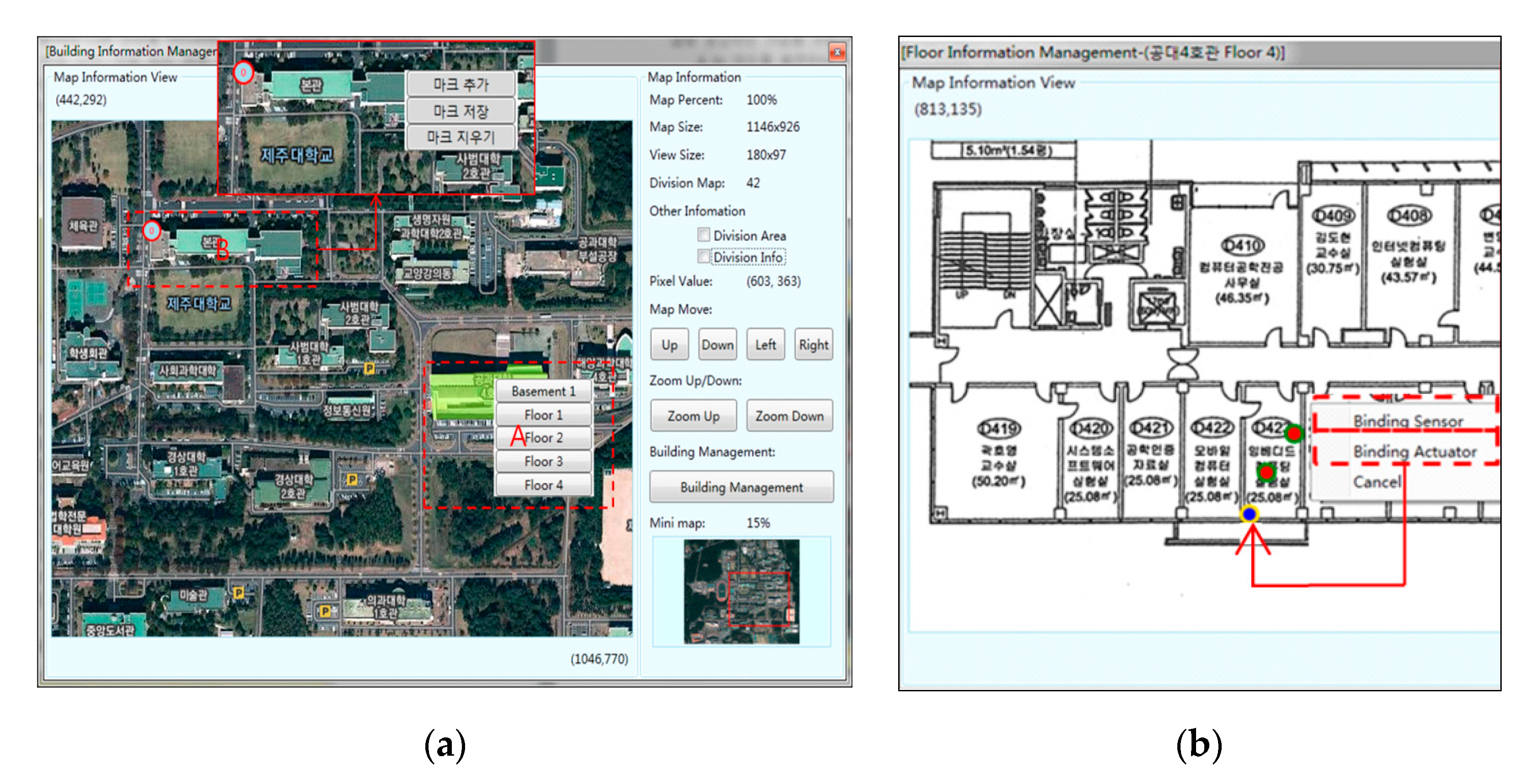
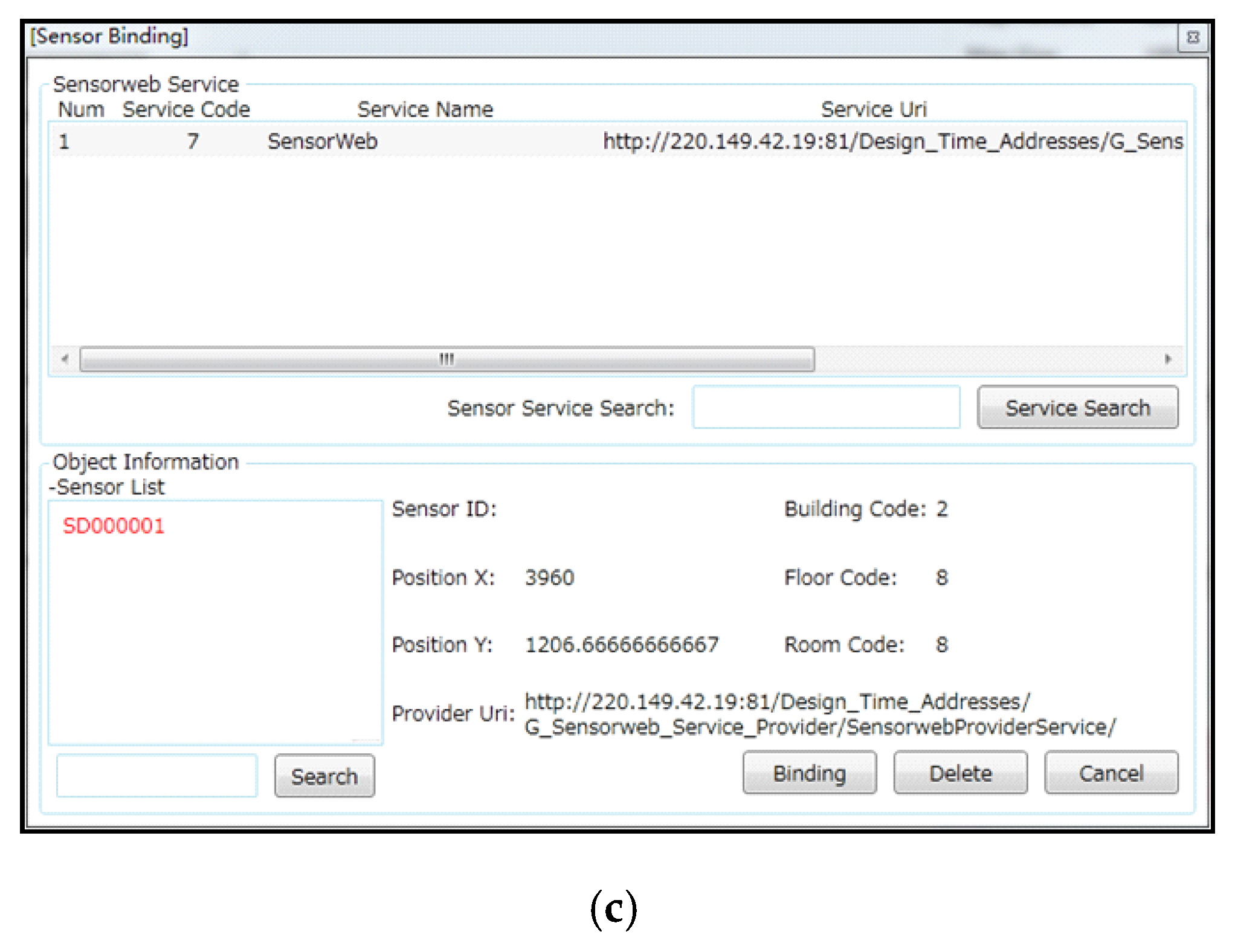
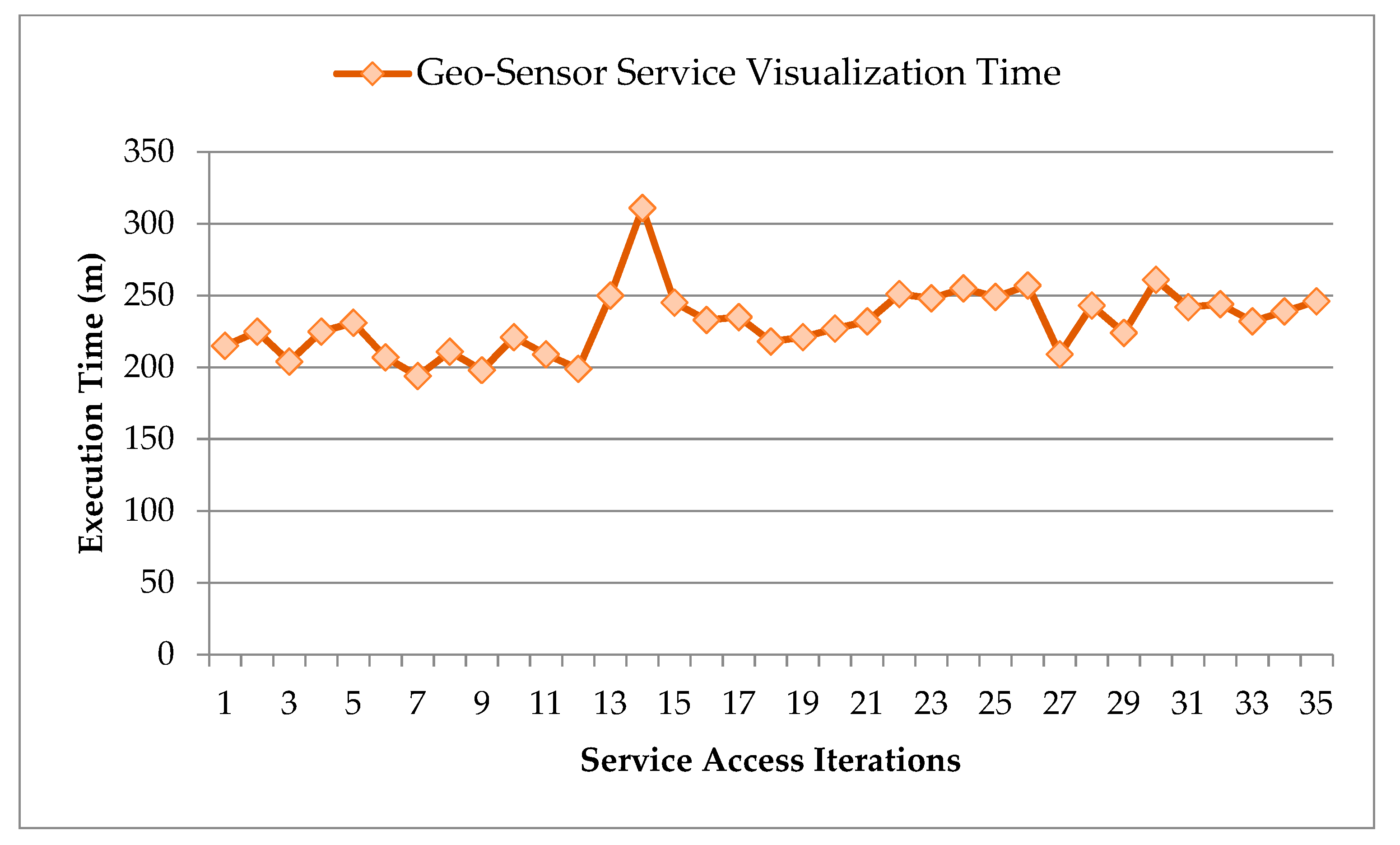
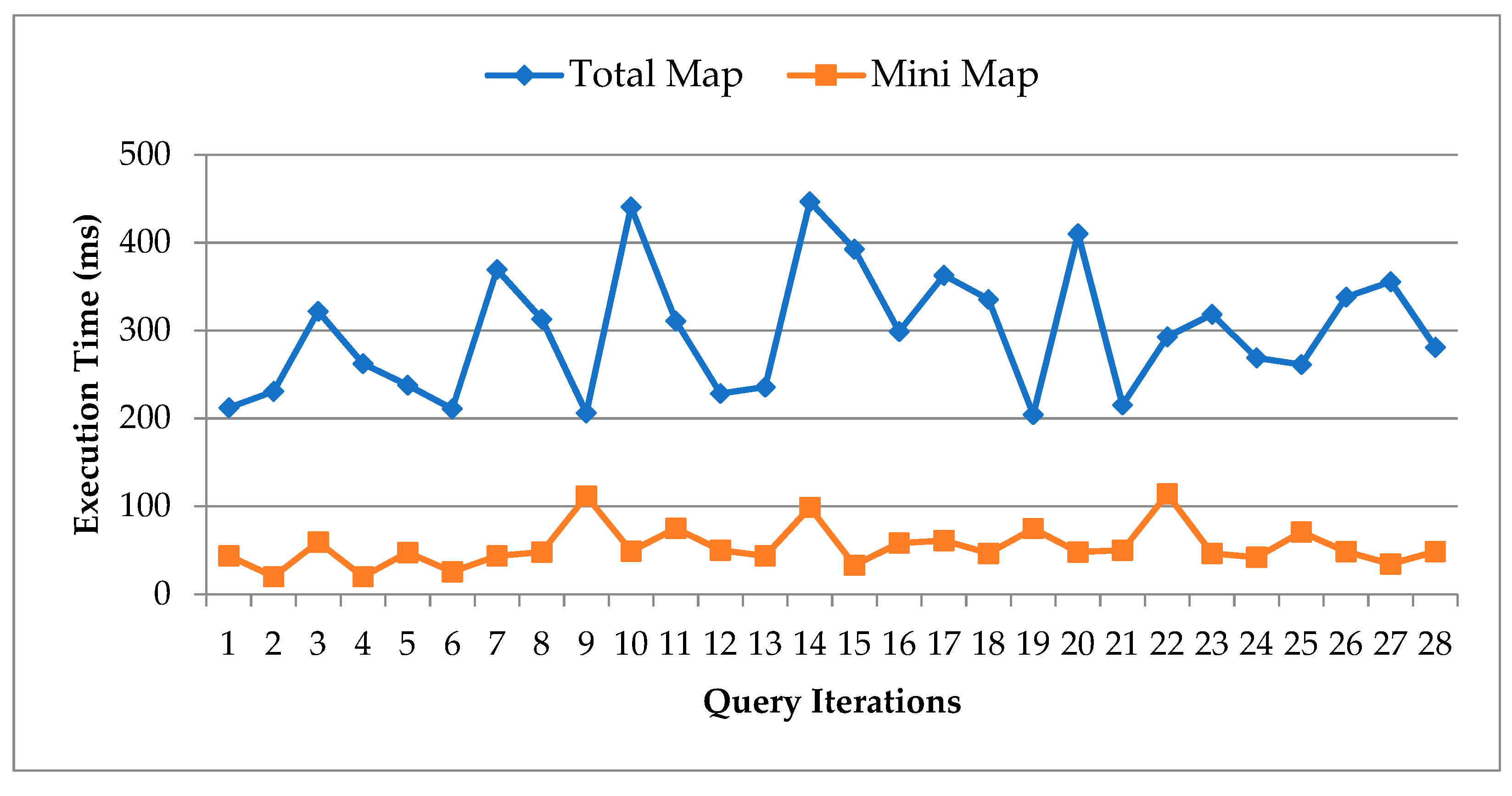
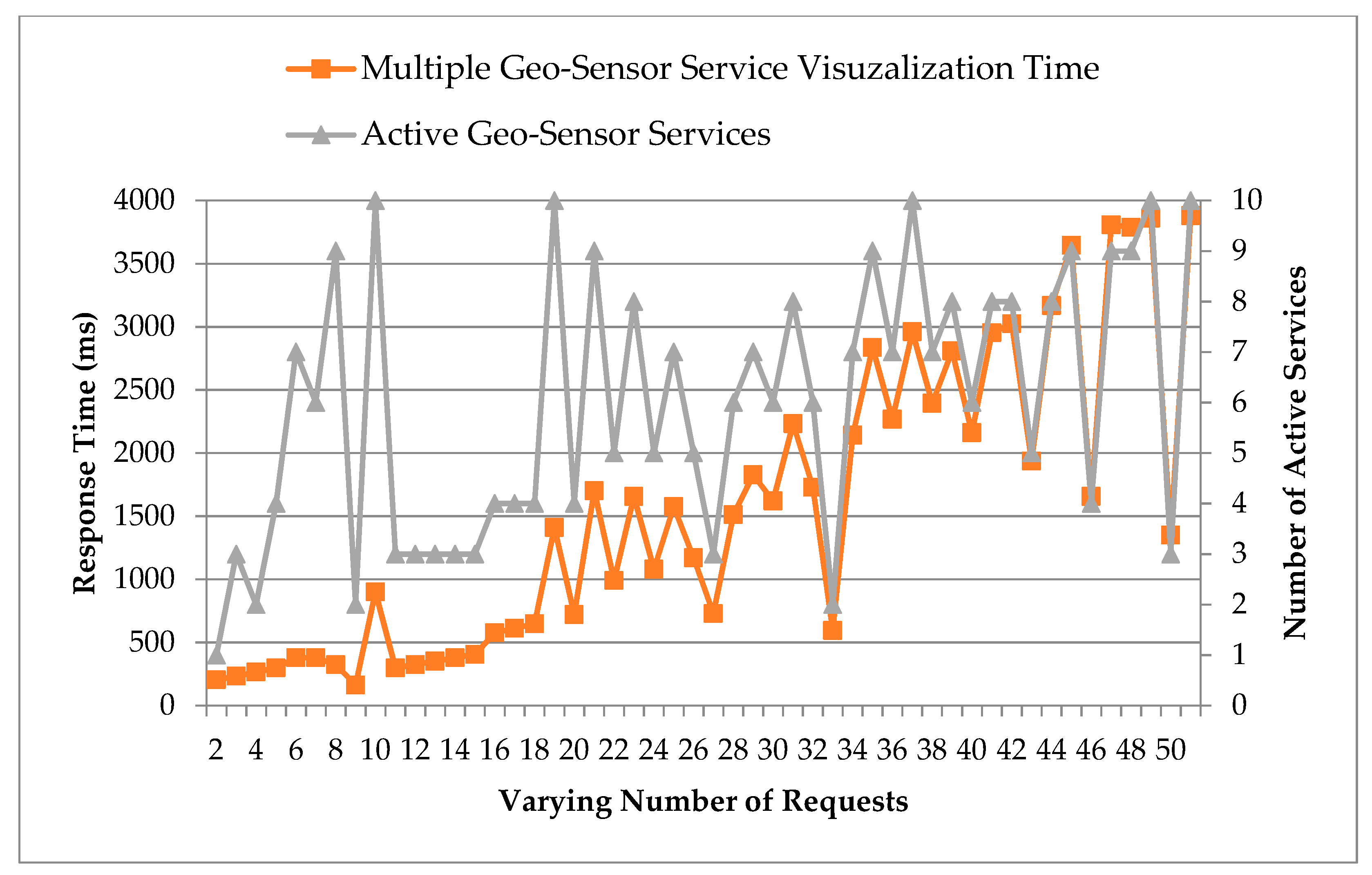


| Components | Version |
|---|---|
| Operation System | Microsoft Windows 10 pro (×64) |
| Microsoft Visual Studio | 2015 |
| Microsoft SQL Server Management Studio | 2016 |
| Intel System Studio IoT Edition | 2017 |
| Putty.exe | 2014 |
| Yocto Linux | 2014 |
| Intel Edison with Kit for Arduino | 2014 |
| Work | SOAP | REST |
|---|---|---|
| Style | Protocol | Architectural style |
| Function | Function driven | Data driven |
| Data Format | XML | Diverse data formats (e.g., JSON, plain text, HTML, XML) |
| Security | WS-Security and SSL | SSL and HTTPS |
| Bandwidth | More resources | Fewer resources |
| Data Cache | No | Yes |
| Work | Bind Geo-Sensor VOs | Geo-Sensor Service Creation | Geo-Sensor Service Management | Geo-Sensor Service Sharing | DIY |
|---|---|---|---|---|---|
| Proposed Geo-Sensor Framework | Yes | Yes | Yes | Yes | Yes |
| CCUS [12] | Limited | Limited | No | Limited | Yes |
| Geo-Sensor Operation | Avg. REST Execution (ms) | Avg. SOAP Execution (ms) | Avg. Difference (ms) |
|---|---|---|---|
| Sensor Binding | 37.71 | 70.76 | 33.05 |
| Map Navigation | 71.28 | 158.71 | 87.42 |
| Map Viewer | 98.1 | 167.72 | 69.62 |
| Map Management | 65.07 | 115.08 | 50.01 |
© 2019 by the authors. Licensee MDPI, Basel, Switzerland. This article is an open access article distributed under the terms and conditions of the Creative Commons Attribution (CC BY) license (http://creativecommons.org/licenses/by/4.0/).
Share and Cite
Malik, S.; Kim, D. Geo-Sensor Framework and Composition Toolbox for Efficient Deployment of Multiple Spatial Context Service Platforms in Sensor Networks. Appl. Sci. 2019, 9, 4993. https://doi.org/10.3390/app9234993
Malik S, Kim D. Geo-Sensor Framework and Composition Toolbox for Efficient Deployment of Multiple Spatial Context Service Platforms in Sensor Networks. Applied Sciences. 2019; 9(23):4993. https://doi.org/10.3390/app9234993
Chicago/Turabian StyleMalik, Sehrish, and DoHyeun Kim. 2019. "Geo-Sensor Framework and Composition Toolbox for Efficient Deployment of Multiple Spatial Context Service Platforms in Sensor Networks" Applied Sciences 9, no. 23: 4993. https://doi.org/10.3390/app9234993
APA StyleMalik, S., & Kim, D. (2019). Geo-Sensor Framework and Composition Toolbox for Efficient Deployment of Multiple Spatial Context Service Platforms in Sensor Networks. Applied Sciences, 9(23), 4993. https://doi.org/10.3390/app9234993





